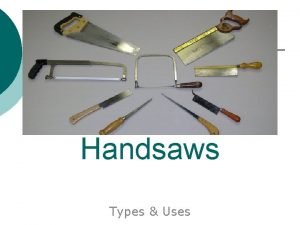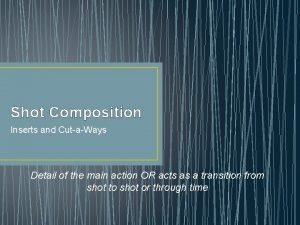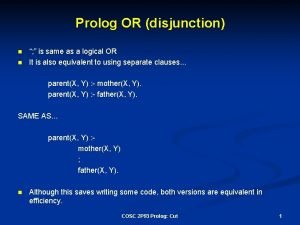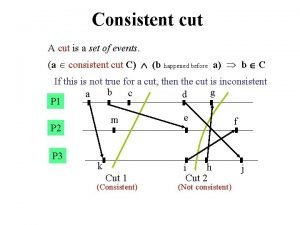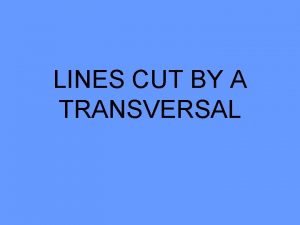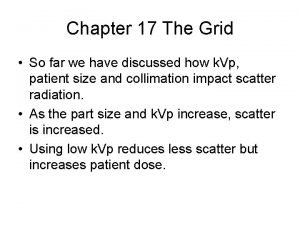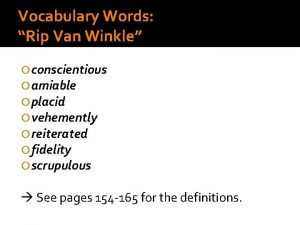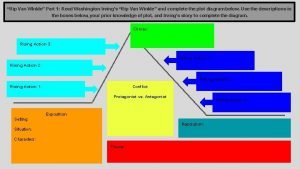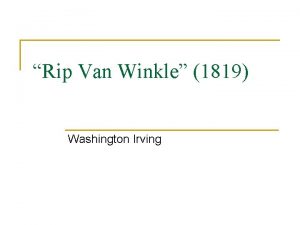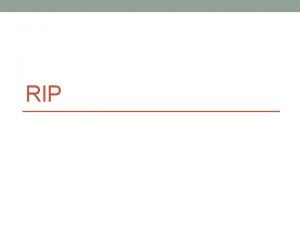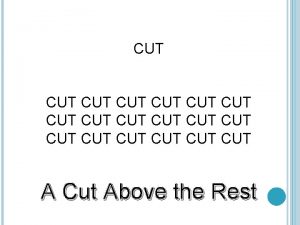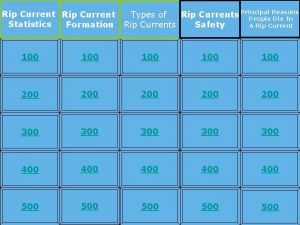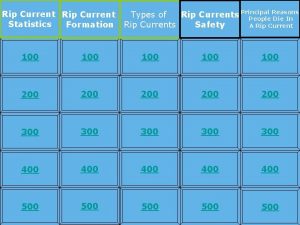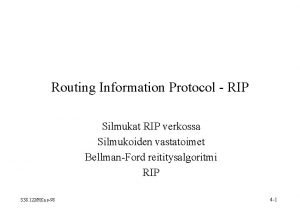Handsaws Types Uses Crosscut vs Rip cut Two












- Slides: 12

Handsaws Types & Uses

Crosscut vs. Rip cut Two saws that look the same …. but are very different. Why

Rip Saw vs. Crosscut Saw ¡ The answer is in the teeth. Rip Saw Crosscut Saw

Rip Saw ¡ ¡ Coarse tooth saw used to make straight cuts in lumber with the grain of the wood. The teeth are in a straight line so the saw does not drift with the grain of the wood. Rip Cut With Wood Grain

Crosscut Saw • Crosscut saws are designed for making straight cuts across the grain in wood. • The teeth are sharpened at an angle and beveled to a point, allowing them to cut cleanly without splintering. • Teeth are in a zig-zag pattern. Crosscut –Across the Wood Grain

The Kerf Cutting boards removes part of the board. ¡ This is where sawdust comes from ¡ We must account for this kerf when we are laying out our projects. ¡ Typically saw blades will leave a 1/8” Kerf. ¡

The Kerf

Planning for the Kerf Space your layout lines at least 1/8” apart ¡ Always cut on the “waste side” of the line ¡ Account for waste when planning ¡

Keyhole & Compass Saw • Keyhole and compass saws are made to cut curved and straight sided holes. • Blade comes to a sharp point. • Since they have a narrow, unsupported blade, keyhole and compass saws have a tendency to bend when cutting.

Coping Saw • Narrow steel blade mounted in a frame. • Used to make intricate, curved cuts. • The blade is usually positioned with the teeth pointing towards the handle and cuts on the pull stroke.

Hack Saw • Tensioned frame that holds a fine toothed blade. • Designed to cut hard materials like metal, plastic, tile, and glass. • A close quarter or mini hacksaw is a smaller version with an open frame that is made for cutting in tight spaces.

Drywall Saw • Coarse saws are used for cutting drywall or wallboard. • Wide blade for straight cuts • Narrow keyhole blades for making cutouts electrical outlets and switches. • The sharp point of the cutout saw allows the blade to plunge directly through wallboard.
